COMMENTS ON THE ART MARKET
Our family's thoughts and prayers are with all our friends, artists, and followers impacted by the recent storm. The images shown on TV have let everyone know how devastating this storm has been.
As you move through the cleanup process, we are available to answer any questions regarding damaged works of art and recommend individuals who can provide professional conservation and restoration.
Gallery News

We are pleased to announce the launch of the Tony South Virtual Checklist. This site has the same goals as our virtual catalogue raisonnés: to chronicle an artist's life and career and list all known, authentic works. This is the first of several similar sites we are working on for our contemporary artists.
We invite you to visit the site and look forward to your comments.
Upcoming Shows
Boston
The Cyclorama
Boston Center For The Arts
539 Tremont St
Boston, MA 02116
October 21: 1pm - 8pm
October 22: 11am - 8pm
October 23: 11am - 5pm
Baltimore
Baltimore Convention Center
One West Pratt Street
Baltimore, MD 21201
October 20 - 23: 11am – 6pm
Winnetka
Community House
620 Lincoln Ave
Winnetka, IL 60093
November 4: 10am – 6pm
November 5: 10am – 5pm
November 6: 11am – 4pm
If you would like to attend one of the shows, please email us and we will send you PDF tickets, while the supply lasts.
______________________
Featured: An Early John Stobart
Recent Acquisition: M.V. Administrator at Dar es Salaam, Tanzania, by John Stobart

We recently acquired a new work by John Stobart, M.V. Administrator at Dar es Salaam, Tanzania. After completing his service in the Royal Air Force in the early 1950s, Stobart planned to return to school at the Royal Academy. By happenstance, a letter arrived in the mail from his father and set Stobart on a journey that would carve a deep passion for many of the works we see today.
With the letter was a ticket to board a ship with a destination of Cape Town, South Africa. His father had recently moved to South Rhodesia (now Zimbabwe) with his new wife Esme and requested John’s visit. The trip turned into a six-month sabbatical where John would travel by train from the southernmost coast of Africa up to Zimbabwe, painting along the way.
M.V. Administrator at Dar es Salaam, Tanzania, is just one of the many paintings done during this trip.
Stobart would often return to South Africa, commissioned by the steamship lines to illustrate their calendar pages.
____________________
Stocks & Crypto
By: Lance
I really don’t even want to write this… it’s starting to get cold, which is depressing enough. Do we really need to talk about stocks right now? This is your last chance… you can just keep scrolling… no? Ok, you asked for it…
All three major indices closed out September, and the third quarter of 2022, at a loss. The Dow has shed nearly 9% this month, though a more modest 7.5% loss for the quarter. The NASDAQ, which is tech-heavy, was the worst of the trio… down 10.5% in the last 30 days, but down just 5.4% since the start of July. And the S&P didn’t fare much better, down about 10% for the month and almost 7.5% for the quarter… in fact it’s the third quarter in a row that the S&P has finished in the red – the first time that’s happened since the global financial crisis back in 2008/09! We’re not even going to get into the totals for the year… I’m not trying to ruin anyone’s weekend.
As for the European currencies, both the Pound and Euro saw moderately significant devaluations… the Pound is down nearly 5% relative to the US Dollar, whereas the Euro is down more than 2%. While those may seem like small figures, when talking about major currencies, that’s substantial. Turning to commodities, gold and crude continued trending downward… gold now sits at $1,668, while the latter has dipped below $80/barrel.
Lastly, we have the crypto kids… Bitcoin seems to be testing its bottom – it’s been fluctuating in the high teens to low-20s for months. Through September we saw a pop up to $22K before falling back below $20K; that seems to be an established support level. Litecoin may be seeing something similar, as it has been hovering in the $40-60 range – it now sits at $53, which is actually up .25% for the month. The outlier of the group is Ethereum, which bounced back in June – it dipped under $900, which is a far cry from the $5K range it was pushing at the end of 2021. It was a volatile month, swinging up 15% in the first week of September and then retreating to finish the month down more than 12%, in the $1,300 range.
Look, if you’ve made it this far, I have to assume you’re some kind of masochist… so maybe you’ll like hearing that inflation is still a major concern, and the Fed has shown no signs of slowing the fight. It’s shaping up to be a long winter.
____________________
The Dark Side
By: Howard
Recovered de Kooning: The Good & The Bad News
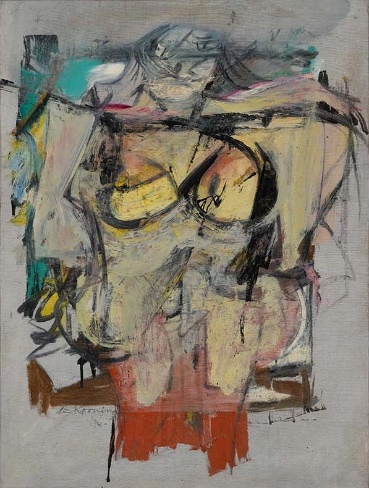 In 1985 a couple walked into The University of Arizona Museum of Art in Tucson, Arizona, and quickly walked out with Willem de Kooning’s Woman-Ochre (1955). According to Olivia Miller, the museum’s curator, the thieves came in just as the museum was opening. While the security staff was heading to their posts, the man went to where the painting was hanging. The woman started talking to one of the guards --- stopping them from getting to their post (near the de Kooning). The man came down the stairs a few minutes later, and the couple left. Once the security guard entered the space, she noticed that the de Kooning had been cut from its frame. There were no cameras, so the case went cold.
In 1985 a couple walked into The University of Arizona Museum of Art in Tucson, Arizona, and quickly walked out with Willem de Kooning’s Woman-Ochre (1955). According to Olivia Miller, the museum’s curator, the thieves came in just as the museum was opening. While the security staff was heading to their posts, the man went to where the painting was hanging. The woman started talking to one of the guards --- stopping them from getting to their post (near the de Kooning). The man came down the stairs a few minutes later, and the couple left. Once the security guard entered the space, she noticed that the de Kooning had been cut from its frame. There were no cameras, so the case went cold.
Fast forwards to 2017 when a New Mexico antique dealer, David Van Auker, bought a collection of items from the Jerry and Rita Alter estate sale for $2,000. Among the items was a painting that hung behind their bedroom door. Van Auker placed the painting in his store, and it wasn’t until someone offered him $200,000 for it that he decided to do a little research. It didn’t take him too long to discover the work was the stolen de Kooning.
The good news is the work was recovered; the bad news is that it was badly damaged and needed a great deal of conservation; the process, done by the Getty, took almost three years. When completed, the restored painting went on view at the Getty Center for a short time and is now back at the Arizona museum … it will be on view beginning October 8. If you are interested in learning more about this case, you will soon be able to watch it on the Big Screen.
Stolen Some 50 Years Ago, And Still Missing
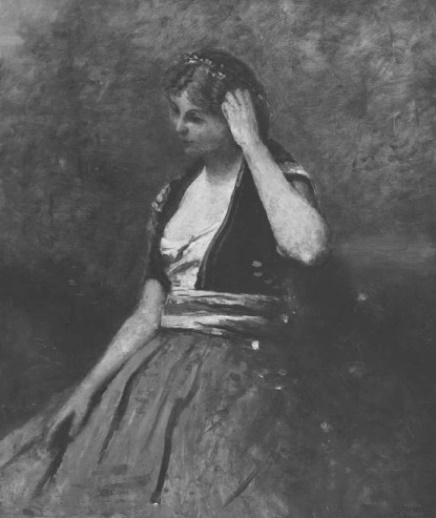 In 1972, three men broke into the Montreal Museum of Fine Arts and drove out with 39 small objects and 18 paintings. According to reports, it took the armed thieves about an hour and a half to enter the museum through a skylight covered in plastic due to construction work (it was the only one unalarmed). They then overpowered the three guards on duty (gagging, blindfolding, and binding them), and one stood guard while the other two collected their stash (valued at some $2 million; I wonder how much those items are worth today?).
In 1972, three men broke into the Montreal Museum of Fine Arts and drove out with 39 small objects and 18 paintings. According to reports, it took the armed thieves about an hour and a half to enter the museum through a skylight covered in plastic due to construction work (it was the only one unalarmed). They then overpowered the three guards on duty (gagging, blindfolding, and binding them), and one stood guard while the other two collected their stash (valued at some $2 million; I wonder how much those items are worth today?).
It appears that initially, the thieves planned on exiting the Montreal museum through the skylight but then realized that one of the guards had keys to a museum truck. When they left the museum through one of the side doors, they set off the alarm and fled on foot; each was carrying some of the stolen items.
Among the stolen paintings were La rêveuse á la fontaine (The Dreaming Woman at the Fountain) by Jean-Baptiste-Camille Corot, Landscape with rocks and stream by Gustave Courbet, La barrateuse (Young Woman Churning) by Jean-François Millet, Landscape with Cottages by Rembrandt van Rijn, Head of a Young Man by Peter Paul Rubens, Portrait of Brigadier General Sir Thomas Fletcher by Thomas Gainsborough, and Ferdinand-Victor-Eugène Delacroix's Lioness and lion in a cave. Most of the paintings were less than a foot long, the largest being the Courbet (about 3 feet in length). The Corot was close behind in size (I can tell you that in today’s market, the Corot is worth much more than $2M).
Sadly, several other ‘things’ took place over that same weekend, generating far more attention from the news. These included a fire that three men set at the Blue Bird Café and the Wagon Wheel bar in Montreal, killing 37 people, and Canada losing the opening game at the Summit Series to the Soviet Union. Then a few days later, members of the Palestinian terrorist group Black September broke into the Israeli quarters at the Munich Olympics, killing two and taking nine hostages (in the end, all the hostages were killed). So, it seems that other events overshadowed the news of the theft.
At one point, ransom negotiations were going on, and the thieves returned one of the works – a Breughel in a show of good faith. But that soon fell apart. Interestingly, the Brueghel was subsequently deemed to be a fake by an art historian. Over the years, reports have surfaced that several stolen works might not be authentic.
Now, 50 years later, the Montreal theft, known as the Skylight Caper, appears to be one of those ‘cold case files.’ We all hope the stolen items will surface and be returned one day.
____________________
Really?
By: Amy
Betty White's White Glove Sale
 Early in September, a fairly heavy box showed up at our house, and to our surprise, it contained three beautiful hardcover books titled The Life and Career of Betty White. They were the Betty White auction catalogs for a sale to be held at Julien's later that month; boy, Julien's spared no expense!
Early in September, a fairly heavy box showed up at our house, and to our surprise, it contained three beautiful hardcover books titled The Life and Career of Betty White. They were the Betty White auction catalogs for a sale to be held at Julien's later that month; boy, Julien's spared no expense!
As you all know, Betty White was an American actress and comedian whose career spanned seventy years. She passed away on New Year's Eve 2021, just shy of her 100th birthday. Betty won five Primetime Emmy Awards, two Daytime Emmys, a Grammy, and many other awards throughout her career. Not surprisingly, Betty made it into the Guinness Book of World records for the longest TV career by a (female) entertainer in 2014.
The three-day auction took place last week and offered over 1,500 lots from the life and career of the famed actress. Thousands of people worldwide participated, and many items far exceeded their estimates.
Some of the most desirable items came from the Golden Girls series (1985-1992). Among those lots included Betty's director's chair, which was estimated to make $1-2K and sold for $60K ($76,800 w/p). The lavender dress she wore for publicity photos in 1986 was estimated to bring $600-800 and made $25K ($32K w/p). Then there were the scripts from the pilot and final episodes of Golden Girls... they shocked the audience as they sold for $45K ($56.6K w/p) and $40K ($51.2K w/p), respectively, each estimated at just $500-700!
Some of her more personal items also did very well. Betty's 2000 Cadillac Deville, which she named Seagull, blew past the $5-7K estimate as it drove up to $40K ($50K w/p). A portrait of Betty, done at some time in the 1950s, sold for $35K ($43,750 w/p) on an $800-1,200 estimate. The wedding band from her 1963 marriage to Allen Ludden (they were together until he passed away in 1981, age 63), along with a black and white photo of the couple, surpassed the $800-1,200 estimate as the lot closed at $20K ($25.6 w/p). One happy fan is now redecorating their home, as they purchased two club chairs that look like they are from the '70s. Betty was sitting in one of the chairs as she recorded a video on December 20, 2021, her final message to fans. They were estimated to make $300-500; I hope you're sitting - the final price was $20K ($25.6K w/p).
It should not surprise anyone that the possessions of Hollywood's beloved Betty White were all sold, a white glove sale! Pre-auction estimates totaled about $600,000; in the end, the sale made more than $4M!
Mickey Mantle Card Hits All-Time Record, But...
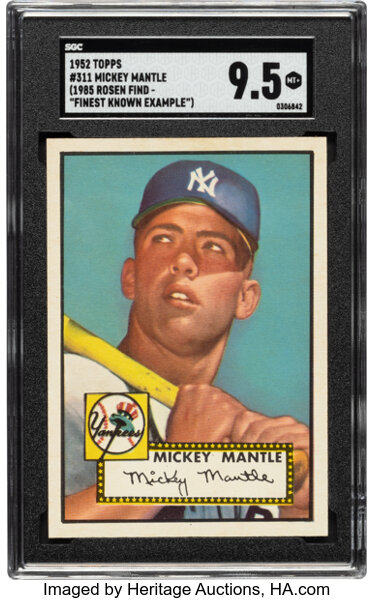 Heritage's recent Summer Platinum Night Sports auction was all over the news for just one lot. The Mickey Mantle 1952 Topps baseball card set an amazing new record for sports memorabilia, but what about the rest of the sale? Did it live up to the hype?
Heritage's recent Summer Platinum Night Sports auction was all over the news for just one lot. The Mickey Mantle 1952 Topps baseball card set an amazing new record for sports memorabilia, but what about the rest of the sale? Did it live up to the hype?
As I glanced through the auction results, there were 1,374 items offered for sale, of which only 45 did not sell. With nearly 97% of lots sold, I'd say that's pretty good! But, as I looked over the lots, all the relevant information as to estimates had been removed, making it difficult to evaluate the true success of the sale. Yes, there were some great results, and with a little help from my sports memorabilia guru (thanks, GB!) I uncovered lots that didn't make the news. The estimates may have been a bit aggressive, so the results didn't hit their mark.
I am sure that Heritage had high expectations for a 2000 Playoff Contenders Tom Brady Championship Ticket rookie card, which was graded by BGS NM-MT+ 8.5 (#67/100). However, it failed to find a buyer. The card was estimated to make more than $2M, which seemed on point considering results for a similar Tom Brady card. This past year, these cards have made record prices of $1.5M, $2.2M, and $3.1M. If you're interested in the card, Heritage will offer it again sometime this fall.
A 1952 Bowman Mickey Mantle #101 PSA Mint 9 didn't make the cut either, failing to make it past its $500K reserve. Interestingly, the next lot featured the same card with an SGC Mint 9 grading, and it sold for $300K. I guess the estimate was just too high for the first example?
Many items sold far below their estimates, including a 1909-11 T206 Polar Bear Ty Cobb (Red Portrait) PSA NM-MT 8, with a rare advertisement on the back for Polar Bear tobacco. It was estimated to make $500K+ and sold for $260K ($312K w/p). A 1933 Goudey Babe Ruth #149 with a PSA NM 7 was expected to make $200K+ and sold for half, just $100K ($120K w/p). They were hoping for $250K+ for a 1955 Topps Sandy Koufax Rookie #123 SGC Mint 9 card, but it managed to make only $120K ($144K w/p). And a rare edition of the 2003 Netpro International Serena Williams (Court Authentic Series A) #2A PSA NM-MT 8, Auto 10 - #'d 54/100, didn't come close to the $200+ estimate when it slammed down at $55K ($66K w/p).
Oh and about the record breaking card - that Mickey Mantle card which was graded by SGC MINT 9.5+. It was expected to make $10M+ and just beat the estimate when it hammered at $10.5M ($12.6 w/p), making it the most expensive sports memorabilia ever sold at auction. But according to a commentary video by Vintage Breaks, there may be an issue with the card's condition. The card was in a brick screw-down case that is no longer used for collectible cards as it can damage the edges and flatten the card. In addition, a bigger issue can arise when the card is removed from the case. Cards put in these cases can sometimes split in half. I truly hope that when you pay $12.6M, you know the card is perfect!
In the end, the sale totaled close to $40M, of which the Mantle card accounted for 31.5% of the sale.
Princess Diana's Ford Escort Sells At Auction
 Even in the best condition, a Ford Escort from the mid-1980s wouldn’t be particularly valuable unless someone rather important owned it. And if royalty isn’t important, I don’t know what is. At the end of August, Silverstone Auto Auctions in the UK held a classic car sale at their racetrack in Towcester, about 8 miles southwest of Northampton. Seemingly all sorts of cars were up for grabs, from a 1948 Bristol 400 to a 2022 re-creation of a Jaguar XKSS. There were also some cars with famous owners, which no doubt increased their value. For example, a 1973 Rolls-Royce Corniche convertible owned by Maurice Gibb of the Bee Gees sold for £108K, while a 1988 Volkswagen Caravelle minibus owned by Stephen Hawking unfortunately and surprisingly went unsold. However, as expected, the star of the sale was a 1985 Ford Escort owned and driven by Diana, Princess of Wales.
Even in the best condition, a Ford Escort from the mid-1980s wouldn’t be particularly valuable unless someone rather important owned it. And if royalty isn’t important, I don’t know what is. At the end of August, Silverstone Auto Auctions in the UK held a classic car sale at their racetrack in Towcester, about 8 miles southwest of Northampton. Seemingly all sorts of cars were up for grabs, from a 1948 Bristol 400 to a 2022 re-creation of a Jaguar XKSS. There were also some cars with famous owners, which no doubt increased their value. For example, a 1973 Rolls-Royce Corniche convertible owned by Maurice Gibb of the Bee Gees sold for £108K, while a 1988 Volkswagen Caravelle minibus owned by Stephen Hawking unfortunately and surprisingly went unsold. However, as expected, the star of the sale was a 1985 Ford Escort owned and driven by Diana, Princess of Wales.
Before joining the royal family, Diana drove a red Ford Escort cabriolet, which was deemed unsuitable by her security detail. The Royal Mews at Buckingham Palace look after all the carriages and cars used by the royal family. They would have gladly supplied the princess with an armored Rolls-Royce or Bentley limousine, as was and still is common for royal transportation. But instead of upgrading, Diana insisted she have a Ford Escort that met the security team’s standards. Ford mainly sold the Escort in white, but Diana’s Escort was one of its kind, painted completely black for security and discretion. The car also still has some extra security features installed just for Diana, including extra mirrors and a radio in the glove compartment.
Diana kept the car until 1988, using it to drive herself and her bodyguard riding shotgun across London, mainly between Chelsea and Kensington. When it sold, the car had just under 25,000 miles on it. Silverstone had predicted the Escort to be one of the big ticket items, valuing it at around £100K. But Diana was and remains one of the most iconic figures of the last half-century. That, plus this year marks the twenty-fifth anniversary of her death. So I guess it’s no surprise that the car sold for more than six times that amount. The final price was £650K / $762.7K (or £722.5K / $847.8K w/p). The buyer has remained anonymous, but when you have Princess Diana's car, I suppose you can't keep the news to yourself for very long.
____________________
The Art Market
By: Nathan
Bonhams 19th Century & British Impressionist Sale
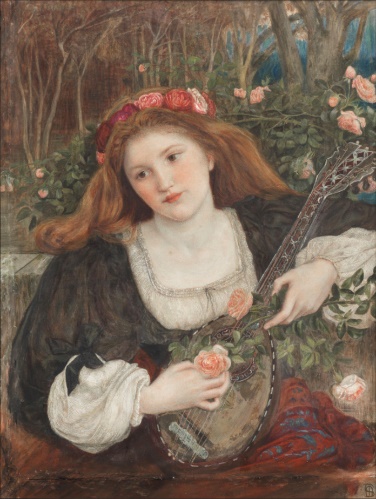 On Wednesday, September 21, Bonhams’ New Bond Street location in London hosted their 19th Century and British Impressionist art sale, with a total of seventy-five lots crossing the block. While several impressive lots sold that day, the sale as a whole fell a bit short, mainly because of a lack of interest in some of the more expensive (or, some might say, over-estimated) pieces. However, the same cannot be said about the sale’s top lot, The Last Sight of Fiammetta by Marie Spartali Stillman. While it was expected to be one of the more valuable pieces sold at the sale, it seems Bonhams' specialists did not predict that the bidders that day would blow right past the £100K high estimate, going back and forth for several minutes before the hammer came down at £230K / $260.8K (or £290.1K / $328.9K w/p). Perhaps this was because of Stillman's connection to the work's subject. On top of being an accomplished painter, Stillman was one of the most popular models for Pre-Raphaelite Brotherhood painters like Dante Gabriel Rossetti. One of Rossetti’s most famous works that featured Stillman as a model is A Vision of Fiammetta, portraying the muse of the Italian Renaissance writer Giovanni Boccaccio. Stillman's Fiammetta was created around the same time she modeled for Rossetti's.
On Wednesday, September 21, Bonhams’ New Bond Street location in London hosted their 19th Century and British Impressionist art sale, with a total of seventy-five lots crossing the block. While several impressive lots sold that day, the sale as a whole fell a bit short, mainly because of a lack of interest in some of the more expensive (or, some might say, over-estimated) pieces. However, the same cannot be said about the sale’s top lot, The Last Sight of Fiammetta by Marie Spartali Stillman. While it was expected to be one of the more valuable pieces sold at the sale, it seems Bonhams' specialists did not predict that the bidders that day would blow right past the £100K high estimate, going back and forth for several minutes before the hammer came down at £230K / $260.8K (or £290.1K / $328.9K w/p). Perhaps this was because of Stillman's connection to the work's subject. On top of being an accomplished painter, Stillman was one of the most popular models for Pre-Raphaelite Brotherhood painters like Dante Gabriel Rossetti. One of Rossetti’s most famous works that featured Stillman as a model is A Vision of Fiammetta, portraying the muse of the Italian Renaissance writer Giovanni Boccaccio. Stillman's Fiammetta was created around the same time she modeled for Rossetti's.
Besides the Stillman painting, the sale’s other top lots were more or less what Bonhams' house experts predicted. Coming in behind Fiammetta was Love at First Sight by Arthur John Elsley, a rather large 42 x 56.25-inch oil on canvas painting executed in 1907. While it only sold for £90K / $102.1K (or £113.7K / $128.9K w/p), just shy of the £100K low estimate, Love at First Sight is, regardless, the most expensive work by Elsley sold at auction since 2013 when his Hold Up, Here He Comes sold at Christie’s London for £146.5K / $239.2K w/p. And finally, just behind the Elsley, The River Dove by Sir Alfred James Munnings hit its low estimate at £80K / $90.7K (or £101.1K / $114.65K w/p). This was definitely an improvement from the last time the Munnings crossed the block, which was back in February 2019 at Christie’s New York when it sold for $70K (or $87.5K w/p).
The combined pre-sale estimates predicted the sale as a whole would bring in at least £1.37M, which makes the final total hammer price of £1.14M (or $1.29M) just a little disappointing. While the sale had a 67% sold rate, many of the more prominent lots were the ones that went unsold. Among these were a Venetian cityscape by Federico del Campo created in 1899 (estimated at £80K to £120K), as well as an orientalist work by Etienne Dinet showing a group of Berber boys enjoying some downtime (estimated at £100K to £150K). About seven other paintings throughout the sale were estimated to reach at least £20K. Had their respective reserves/estimates been lower, that would have sparked more interest, and created a more successful sale for Bonhams.
The William Paley Collection Coming To Sotheby's
Besides being the president of CBS, William Paley was also known as an art collector, favoring works by the great nineteenth- and twentieth-century masters. His collection is currently owned by his namesake foundation, but much of it is on long-term loan to the Museum of Modern Art in New York. The collection contains many works by European impressionists and Fauvists like Cézanne, Matisse, and Derain, while also featuring later, more abstract works by Giacometti, Motherwell, and Albers. Recently, Sotheby’s won the consignment to sell part of the Paley collection across several New York and London sales. Eighty works from Paley’s collection are displayed at MoMA, and soon we'll see twenty-nine of them cross the block at Sotheby’s. The first works from the Paley collection will be featured in the October 14th Contemporary Evening sale in London, including Francis Bacon’s Three Studies for Portrait of Henrietta Moraes. The other works will be sold later at a November 14th New York sale, including Picasso’s Guitar on a Table.
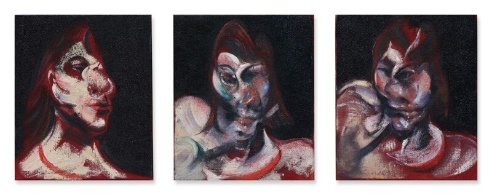 William Paley did not found the Columbia Broadcasting System, but he built it from a small radio network to one of the top broadcasting services in the United States. He was president and majority shareholder of the company starting in 1928. By 1937, Paley was already building up his art collection and became a member of MoMA’s board. He also later served as the president of the museum and chairman of the painting and sculpture committee when the museum underwent a period of expansion in the 1980s. The collection was first exhibited to the public in 1992 shortly after Paley's death, and later toured the United States for several years before returning to MoMA. Paley’s son Bill, now head of the William S. Paley Foundation, stated that the sales’ proceeds will go directly to the foundation’s philanthropic work and to MoMA for expanding its digital services. Specialists estimate that the pieces just from Paley’s collection will bring in a minimum of $70 million for Sotheby’s.
William Paley did not found the Columbia Broadcasting System, but he built it from a small radio network to one of the top broadcasting services in the United States. He was president and majority shareholder of the company starting in 1928. By 1937, Paley was already building up his art collection and became a member of MoMA’s board. He also later served as the president of the museum and chairman of the painting and sculpture committee when the museum underwent a period of expansion in the 1980s. The collection was first exhibited to the public in 1992 shortly after Paley's death, and later toured the United States for several years before returning to MoMA. Paley’s son Bill, now head of the William S. Paley Foundation, stated that the sales’ proceeds will go directly to the foundation’s philanthropic work and to MoMA for expanding its digital services. Specialists estimate that the pieces just from Paley’s collection will bring in a minimum of $70 million for Sotheby’s.
Phillips London Evening & Day Editions
 On September 14th and 15th, Phillips London hosted their Evening and Day Edition sales. Over two sales spanning seven hours total, 233 lots crossed the block, resulting in exceptional results for Phillips. The Evening Edition sale on September 14th featured some more valuable pieces, with Phillips specialists predicting hundreds of thousands of pounds each for a small handful of lots.
On September 14th and 15th, Phillips London hosted their Evening and Day Edition sales. Over two sales spanning seven hours total, 233 lots crossed the block, resulting in exceptional results for Phillips. The Evening Edition sale on September 14th featured some more valuable pieces, with Phillips specialists predicting hundreds of thousands of pounds each for a small handful of lots.
That evening, the top lot was Roy Lichtenstein’s Water Lilies with Willows, a large piece of screenprinted enamel on stainless steel created in 1992. It was expected to be the most valuable lot of the sale, an expectation it upheld when it reached its low estimate of £300K / $347K (or £378K / $437.3K w/p). Coming up in second, as predicted by the house experts, was Thrower (Grey) by Banksy. The image of a masked rioter in the action of throwing a bouquet as if it’s a rock or Molotov cocktail was originally created as a mural in 2007 when Banksy visited the West Bank. It has since become one of the British street artist’s most recognizable and replicated images. This rendition created in 2019 features the subject divided up in a triptych of micron boards of varying sizes. It ended up falling within its £150K to £200K estimate when the hammer came down at £170K / $196.6K (or £214.2K / $247.8 w/p). However, while Phillips was expecting big things from other Lichtenstein and Banksy works, one lot came up from behind and stole the spotlight. Created by Damien Hirst just last year, The Virtues (consisting of eight laminated giclée prints), sold for £120K / $138.8K (or £151.2K / $174.9 w/p), nearly double its £70K high estimate.
The evening sale was expected to bring in anywhere between £1.4M and £2.07M. With twenty-eight of the available sixty-two lots falling within estimate, and an additional twenty-six selling for over estimate, the evening sale fell comfortably on the high end at £1.8M, while the specialists earned a 45% accuracy rate. Only a single lot failed to sell, giving the first sale a 98% sold rate.
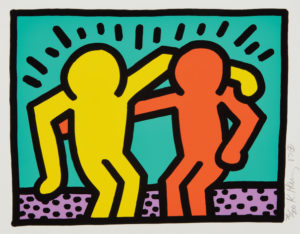 The Day Edition sale was far longer, with a larger number of lower-priced works up for grabs. But while Phillips specialists were very good with predicting the top lots for the evening sale, the Day Edition was completely different. While the experts’ estimates placed screenprints by Robert Motherwell and Damien Hirst at the very top, the stars of the day sale ended up being a small handful of lots that greatly exceeded expectations. In first place, coming in towards the end of the sale, was the Keith Haring screenprint Pop Shop I. Measuring only 12 x 15 inches, the relatively small 1987 print is unmistakably Haring, featuring the colorful humanoid outlines that have become the most identifiable hallmark of his work. What the house experts originally predicted would sell for no more than £8K ended up in the sights of several bidders, who drove up the price to four times its high estimate at £32K.
The Day Edition sale was far longer, with a larger number of lower-priced works up for grabs. But while Phillips specialists were very good with predicting the top lots for the evening sale, the Day Edition was completely different. While the experts’ estimates placed screenprints by Robert Motherwell and Damien Hirst at the very top, the stars of the day sale ended up being a small handful of lots that greatly exceeded expectations. In first place, coming in towards the end of the sale, was the Keith Haring screenprint Pop Shop I. Measuring only 12 x 15 inches, the relatively small 1987 print is unmistakably Haring, featuring the colorful humanoid outlines that have become the most identifiable hallmark of his work. What the house experts originally predicted would sell for no more than £8K ended up in the sights of several bidders, who drove up the price to four times its high estimate at £32K.
Then there were two prints, also towards the end of the sale, by the contemporary British artist Julian Opie. The prints, in back-to-back lots, are the sixth and seventh entries of the series known as Bijou Gets Undressed, created in 2004. Each print contains five renditions of the same minimalistic female figure in the process of removing her clothing. Bijou Gets Undressed 6 and Bijou Gets Undressed 7 sold for £19K and £18K, respectively, while each was only expected to sell for £7K at most. And finally, another unexpected member of the sales top lots: the Joan Miró lithograph Pierrot le Fou. Created in 1964, the print is a good example of Miró’s tendency towards abstractionism in his later life. Perhaps this recognizable abstract style caused the print to tie for third at £18K / $20.7K (£22.68K / $26.1K w/p), triple its £6K high estimate. In total, the second sale did very well, exceeding the original £693.2K high total presale estimate and bringing in £807K / $928.5K. Out of one hundred seventy-one available lots, only ten failed to sell, giving the sale a 94% sold rate. The house specialists also did well, with fifty-six lots (33%) falling within estimate. An additional seventy-six lots (44%) exceeded their estimates, while only twenty-nine lots (17%) fell short but sold regardless.
Overall, Phillips did incredibly well in this enormous sale. Across the two sales, two hundred thirty-three lots crossed the block, with only eleven lots (5%) being bought in. 44% of the lots sold over estimate, while 36% sold within. The total fell on the higher end of the presale estimate range, bringing in £2.63M or $3M for Phillips.
Phillips London David Hockney Sale
 On Tuesday, September 13th, Phillips London held an entire sale consisting of the works of the British artist David Hockney. The seventy-eight available lots, mainly prints and digital works, did as well as one might expect for a collection by one of the most sought-after living artists in the world. Hockney has adopted digital media into his creative process, creating many drawings and prints on his iPad. The Arrival of Spring in Woldgate, East Yorkshire in 2011 - 30 May is one such iPad drawing that he printed on wove paper measuring 55.25 x 41.5 inches. It exceeded the £180K high estimate, reaching £270K / $311.3K (or £340.2K / $392.2K w/p). Not far behind was another iPad drawing from the same series, this one being the 19 February entry. Phillips specialists expected this one to do well, but not quite as well as 30 May, assigning an estimated range of £100K to £150K. 19 February ended up selling for £250K / $288.2K (or £315K / $363.1K w/p).
On Tuesday, September 13th, Phillips London held an entire sale consisting of the works of the British artist David Hockney. The seventy-eight available lots, mainly prints and digital works, did as well as one might expect for a collection by one of the most sought-after living artists in the world. Hockney has adopted digital media into his creative process, creating many drawings and prints on his iPad. The Arrival of Spring in Woldgate, East Yorkshire in 2011 - 30 May is one such iPad drawing that he printed on wove paper measuring 55.25 x 41.5 inches. It exceeded the £180K high estimate, reaching £270K / $311.3K (or £340.2K / $392.2K w/p). Not far behind was another iPad drawing from the same series, this one being the 19 February entry. Phillips specialists expected this one to do well, but not quite as well as 30 May, assigning an estimated range of £100K to £150K. 19 February ended up selling for £250K / $288.2K (or £315K / $363.1K w/p).
Finally, the third of the sale’s top lots was a work of a more traditional medium. Afternoon Swimming is a 31.5 x 39.5-inch lithograph on paper from 1979. Obviously, with swimming pools and swimmers being some of Hockney’s most popular subjects, the print was bound to bring in a hefty sum. This was likely why experts at Phillips predicted it would bring in up to £400K and take the top spot. Unfortunately, the hammer came down at only £240K / $276.7 (or £302.4K / $348.6K w/p), just £10K shy of its minimum estimate. These three lots are the most expensive Hockney works to sell at auction since his acrylic on canvas painting Two Red Pots sold at Christie’s Hong Kong in May of this year for HK$9.5M (or $1.2M).
Given Hockney’s popularity, it may not be too surprising that bidders paid far more than what was expected for some of the works up for grabs. For example, Hockney’s 1977 etching and aquatint on paper entitled What is this Picasso? from his Blue Guitar series brought in £9.5K / $10.95K (or £11.97K / $13.8K w/p) when it was only expected to bring in £3K. But for me, the most surprising result came rather early on in the sale, with a poster designed by Hockney for the 1972 Munich Olympics. The offset lithograph on paper shows a diver in the midst of plunging into a pool, made rippling by an almost random pattern that reminds me of a blue camouflage print. It was only expected to sell for £1K maximum, and it ended up selling for £4K / $4.6K (or £5K / $5.8K w/p), which, though not as great a sum as some of the other lots’ final hammer prices, was regardless a nice little surprise.
Phillips’ Hockney sale did incredibly well, exceeding its £2M total pre-sale estimate and bringing in £2.65M / $3.1M. Of the seventy-eight available lots, sixty-one (or 78%) sold over estimate, while twelve (or 15%) sold within estimate. The rest sold below estimate as no works went unsold.
Bonhams New York Ernie Barnes Sale
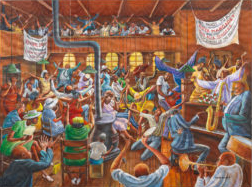 On Friday, September 9th, Bonhams New York held a very special sale, particularly because it was a rather brief affair. There was only a single lot in the catalogue: Solid Rock Congregation by Ernie Barnes. Why Bonhams didn't just put it in the next 20th Century or American sale is unknown. Ever since the Ernie Barnes painting The Sugar Shack sold for $13M at Christie’s 20th Century sale on May 12th, the demand for and value of his paintings have completely skyrocketed. Most Ernie Barnes works that have sold since The Sugar Shack have greatly exceeded the expectations of auction house specialists. And Friday’s sale was no different. The painting, completed in 1983, is entitled Solid Rock Congregation. It shows the interior of a modest church on a Sunday morning. The American gospel singer Margaret Bell-Byars originally commissioned the work, and she can be seen singing on the left-hand side of the painting among other singers and instrumentalists. The canvas is very large, measuring about 36 by 48 inches. For such a large work, Bonhams specialists appeared comfortable with a $500K to $700K estimate. But, of course, bidders blew past the estimate within a few minutes. The hammer finally came down at $1.3M (or $1.62M w/p). This makes it the first time a Barnes work exceeded $1M since Main Street Pool Hall sold at Christie’s on June 28th for £1.2M / $1.47M (or £1.48M / $1.81M w/p). It helped that the Bonhams sale is not only the first time Solid Rock Congregation was sold at auction but the first time it’s been seen publicly since its creation thirty-nine years ago.
On Friday, September 9th, Bonhams New York held a very special sale, particularly because it was a rather brief affair. There was only a single lot in the catalogue: Solid Rock Congregation by Ernie Barnes. Why Bonhams didn't just put it in the next 20th Century or American sale is unknown. Ever since the Ernie Barnes painting The Sugar Shack sold for $13M at Christie’s 20th Century sale on May 12th, the demand for and value of his paintings have completely skyrocketed. Most Ernie Barnes works that have sold since The Sugar Shack have greatly exceeded the expectations of auction house specialists. And Friday’s sale was no different. The painting, completed in 1983, is entitled Solid Rock Congregation. It shows the interior of a modest church on a Sunday morning. The American gospel singer Margaret Bell-Byars originally commissioned the work, and she can be seen singing on the left-hand side of the painting among other singers and instrumentalists. The canvas is very large, measuring about 36 by 48 inches. For such a large work, Bonhams specialists appeared comfortable with a $500K to $700K estimate. But, of course, bidders blew past the estimate within a few minutes. The hammer finally came down at $1.3M (or $1.62M w/p). This makes it the first time a Barnes work exceeded $1M since Main Street Pool Hall sold at Christie’s on June 28th for £1.2M / $1.47M (or £1.48M / $1.81M w/p). It helped that the Bonhams sale is not only the first time Solid Rock Congregation was sold at auction but the first time it’s been seen publicly since its creation thirty-nine years ago.
____________________
Deeper Thoughts
By: Nathan
New York City Streets Mourn The Queen
 Until last week, most of us had not known a world without Queen Elizabeth II. Across the globe, people paid tribute to Britain’s longest-reigning monarch in all sorts of ways: flags throughout the world were lowered to half-mast, world leaders issued statements of condolence, the Queen’s face was projected on the side of the Sydney Opera House, and the Empire State Building was lit up in purple and silver. But others have paid their respects in other, smaller ways. This includes the British-born New York street artist Adrian Wilson, also known as Plannedalism.
Until last week, most of us had not known a world without Queen Elizabeth II. Across the globe, people paid tribute to Britain’s longest-reigning monarch in all sorts of ways: flags throughout the world were lowered to half-mast, world leaders issued statements of condolence, the Queen’s face was projected on the side of the Sydney Opera House, and the Empire State Building was lit up in purple and silver. But others have paid their respects in other, smaller ways. This includes the British-born New York street artist Adrian Wilson, also known as Plannedalism.
Wilson has become known on social media mainly for his alterations of public signs in New York City, both on the street and in the subway. He gained widespread recognition following the death of Supreme Court Justice Ruth Bader Ginsburg by altering the tiled, mosaic subway sign at the 50th Street station to read “Ruth St.” He’s not posted anything to his Instagram since December of last year. Still, he decided to break his silence streak by collaborating with graphic artist Matt Duncan to create a tribute to the late queen. Sticking with subway signs, they posted photographs of the subway entrance at Queens Plaza in Long Island City. Normally, the sign above the stairs reads Queens Plaza Station and indicates that it services the E, M, and R lines. Wilson covered and altered the sign so it reads "Queens Passed". Furthermore, he created an emblem of a black crown against an orange background, the same color orange as the emblem for the M train. Placing it over the M train symbol, he’s created a sort of subway version of the Queen’s royal cypher.
It’s not overly celebratory or reverential, but rather simple and commemorative, as well as fitting within Wilson’s style. When asked about his tribute, Wilson said, “The world improved from the Queen being in it. It’s as simple as that.”
Vermeer's Milkmaid Unveils New Secrets
 Starting on February 10, 2023, the Rijksmuseum in Amsterdam will open an exhibit featuring 27 of the 35 known paintings by the Dutch Golden Age master Johannes Vermeer. It will be the largest Vermeer exhibition to date, reuniting many of his most recognizable masterpieces. The show will include the Rijksmuseum's Milkmaid and the iconic Girl with a Pearl Earring from the Mauritshuis museum in The Hague. The last time these two Vermeer masterworks were together was in a show at the Mauritshuis in 1996. Furthermore, the Frick Collection in New York is sending its three Vermeer paintings from its inventory: Officer & Laughing Girl, Girl Interrupted at Her Music, and Mistress & Maid. This will be their first time leaving New York since they arrived over a century ago.
Starting on February 10, 2023, the Rijksmuseum in Amsterdam will open an exhibit featuring 27 of the 35 known paintings by the Dutch Golden Age master Johannes Vermeer. It will be the largest Vermeer exhibition to date, reuniting many of his most recognizable masterpieces. The show will include the Rijksmuseum's Milkmaid and the iconic Girl with a Pearl Earring from the Mauritshuis museum in The Hague. The last time these two Vermeer masterworks were together was in a show at the Mauritshuis in 1996. Furthermore, the Frick Collection in New York is sending its three Vermeer paintings from its inventory: Officer & Laughing Girl, Girl Interrupted at Her Music, and Mistress & Maid. This will be their first time leaving New York since they arrived over a century ago.
Being the largest Vermeer exhibition in recorded history will certainly draw crowds, but recent revelations about The Milkmaid will probably be another contributing factor to the exhibition’s predicted popularity. Vermeer has become so popular for several reasons. His works are few, which makes each individual painting very valuable. They offer a brief glimpse into Dutch domestic life, conveying a tranquility that can sometimes be missing from our own lives. But Vermeer is a particular favorite for many because people are still very much interested in his technique. He was a master of light, able to capture the slightest differences of illumination and shadow on the walls, within the folds of garments, refracted through glass, and dimmed through cloth drapes. The prevailing assumption for many years had been that Vermeer was incredibly meticulous, painstakingly poring over his canvas to get his interior scenes exactly as he wanted them. There are entire documentaries available (like the one made by Tim Jenison) where people test theories that he may have used some optical device like a camera obscura to help him create his works. But now, the discoveries made at the Rijksmuseum bring those assumptions into question.
Scans of The Milkmaid performed by Rijksmuseum conservators now show elements of the original work later painted over. It seems Vermeer originally planned for several ceramic jugs to hang on the wall behind the titular woman. Also, there was originally a woven basket on the floor in the lower right-hand corner of the painting. While it was originally assumed that Vermeer painted incredibly slowly to create a complete scene with few revisions, these new scans show something very different. That it’s likely that, according to the museum, “Vermeer first quickly painted the scene in light and dark tones before developing the detail.” While an artist adding or removing elements from an interior scene on a whim may not seem particularly noteworthy, it is actually eye-opening when it comes to Vermeer. Maybe this was just a one-time thing, or maybe this discovery will dramatically alter how academics and researchers view Johannes Vermeer’s works and techniques.
China's War On Dissident Art
 It all sounds like something out of a spy thriller: A work by an artist exiled from his home country suddenly goes up in flames. Many brushed it off as just an accident, but the artist thinks there’s something more sinister afoot. But it turns out the truth is stranger than fiction a lot of the time.
It all sounds like something out of a spy thriller: A work by an artist exiled from his home country suddenly goes up in flames. Many brushed it off as just an accident, but the artist thinks there’s something more sinister afoot. But it turns out the truth is stranger than fiction a lot of the time.
This is the story of Chen Weiming, a Chinese sculptor now living and working between New Zealand and the United States. I actually briefly mentioned Chen’s work late last year when the Pillar of Shame, a statue commemorating the victims of the Tiananmen Square massacre, was removed from the University of Hong Kong campus. In 2008, Chen created a replica of the Goddess of Democracy, a statue constructed by the Tiananmen Square protestors. He had it erected on the Chinese University of Hong Kong’s campus until its removal last year.
One of Chen’s more recent works was a large sculpture set up in the Liberty Sculpture Park in California’s Mojave Desert: a giant head, half of which is a skull and the other half bears the likeness of Chinese General-Secretary Xi Jinping. Large red rods protrude from the top of the head, making it appear like a coronavirus molecule. Below, on the pedestal, large red letters spell out “CCP Virus”, likely in reference to China’s failures leading to the spread of COVID-19.
Shortly after Chen unveiled the work, the sculpture caught fire and was destroyed. Soon after the incident, Chen quickly pointed fingers at the Chinese security services. While accidents happen all the time, Chen’s claims were not as far-fetched as people thought. While CCP Virus was destroyed in the spring of 2021, the US Justice Department has recently charged seven people with a whole litany of crimes, some of them connected to the destruction of Chen Weiming’s work.
It all started when an IRS agent wouldn’t accept a bribe. Evidence suggests that Americans Frank Liu and Matthew Ziburis worked with Chinese national Qiang Sun on behalf of China's security services to undermine and discredit US-based dissidents critical of the People’s Republic of China. The trio’s plans fell apart when Liu paid a private investigator to bribe an IRS agent to obtain one target’s federal tax returns. After Liu and Ziburis’s arrests, evidence suggests they were likely behind CCP Virus’s destruction. Ziburis also approached Chen, posing as a wealthy patron from New York who sought to commission a sculpture. During his visits to Chen’s Los Angeles studio, he installed surveillance equipment on Chen’s property. The Justice Department estimates all those arrested were paid around $3 million for their services.
This is far from the first time the Chinese government has openly or secretly operated on foreign soil to disrupt the lives and livelihoods of Chinese-born dissidents. One of the most famous Chinese dissident artists today is Badiucao, who habitually gets into trouble over his work and its criticism of Beijing. Last November, local officials in the northern Italian town of Brescia defiantly went through with organizing a show of Badiucao’s work, despite protests from Beijing. Badiucao interpreted the Chinese embassy’s requests as “a direct order to the museum demanding that the show be canceled.” The exhibition featured various works criticizing China’s human rights record, its relationship with Hong Kong, and its handling of the coronavirus pandemic. Several of Badiucao’s works also feature the image of Winnie the Pooh. The fictional bear’s image is heavily regulated in China since a series of memes from several years ago mocked Xi by comparing his appearance with that of the character. Badiucao has continued to use Pooh imagery in relation to Xi, most notably in a graphic work posted to his Instagram account regarding House Speaker Nancy Pelosi’s controversial trip to Taiwan. The image depicts Pelosi and Taiwanese president Tsai Ing-wen posing for a photo standing on top of a Winnie the Pooh bearskin rug.
Chen Weiming has since made a second version of CCP Virus, this time made from steel, so it would never meet the same fate as the original.
The Rehs Family
© Rehs Galleries, Inc., New York – October 2022
